- V
- GF
- NS
- DF
- View Recipe Key
How to Make Gelato: Step-by-Step Recipe (Dairy-Free, Vegan Options)
How to Make Gelato: Step-by-Step Recipe (Dairy-Free, Vegan Options)
Get detailed, step-by-step instructions and tips to make the creamiest gelato and learn how to turn one base into a multitude of flavors.
This post contains affiliate links. Full disclosure is at the bottom of the article.
Before going to Italy for the first time many years ago, I had heard all about the awesomeness of Italian ice cream. Everyone who had tasted it seemed possessed by the memory the Italian frozen treat, telling me about the incredibly smooth creaminess and intense flavor of gelati. When I asked around to ask whether gelato and ice cream were two different things, I didn’t seem to be able to get a clear answer. To try and get answers to all my questions, I resolved to eat gelato every day—sometimes even twice a day!—tasting my way around Rome, Tuscany, and other regions I visited on that trip.
The flavor of gelato is very intense and pure, its color is bright, and its texture is clean, not too rich. I gravitated towards fruit-based flavors, which I found to taste as intensely as sorbets, but without the egg-whitey, frothy texture. Because of the saturated colors, I thought fruit-based gelato flavors might not contain dairy.
After I returned, I made a deep-dive into the world of gelato-making to find out what it is, how it’s made, and what makes it so delightful. This article contains these answers, along with all my tips to make the best Italian ice cream you’ll ever get to enjoy outside of Italy.
What Makes Gelato Different from Ice Cream?
Gelato is not just a fancy name for ice cream? Here’s what makes it unique:
- Gelato contains less fat than ice cream. Ice cream’s main ingredient is cream, whereas gelato is made mainly from milk. Some recipes use a small quantity of cream, and some use only milk. Gelato also usually uses fewer egg yolks than custard-based ice cream, although that depends on the recipe. Fat coats the tongue in a lovely, silky way, but it also tends to mute flavors. The lower fat content in Italian ice cream could explain why people tend to find its taste brighter and more intense. The flavors come through more directly than when they’re blended with heavy cream.
- Gelato has a denser texture than ice cream. Italian ice cream is churned at a slower speed than ice cream, which means that the finished product contains less air than ice cream. This slow churning process creates the iconic dense, creamy texture of the frozen treat.
- Gelato is served at warmer temperatures than ice cream. Storing Italian ice cream at warmer temperatures makes it softer, providing its signature silky texture. Ice-cold treats numb the tongue, but because gelato is served soft, you feel like you’re having a richer treat than its fat content indicates. The warmer serving temperature also allows the flavors to come through better.
How to Make Gelato at Home
First things first: you need the right recipe, of course. There is no single recipe for Italian ice cream, and like many culinary specialties in Italy, each region makes it slightly differently. After trying several techniques, I’ve come up with two recipes to create rich, creamy bases I can transform into a variety of flavors.
The first recipe makes a classic gelato base. It is made with an egg yolk-rich custard that gives it a creamy texture, which I find closer and a pale yellow shade, which reminds me classic ice cream. You can simply add a split vanilla bean to classic gelato base and produce outstanding vanilla gelato. A classic gelato base is also a great choice for producing chocolate-flavored and nut-based gelati.
The second recipe makes a Sicilian gelato base. This Sicilian-style gelato base uses cornstarch as a thickening agent instead of egg yolks. This produces a bright white gelato and a delightfully silky, mouth-coating texture. A Sicilian gelato base is the perfect choice for making fruit-based frozen treats. Learn more about Sicilian-Style Gelato.
Pictured below, at the top: Classic Gelato Base
Bottom: Sicilian-Style Gelato Base
Do You Need an Ice Cream Maker to Make Gelato?
Yes, to produce the silky, rich texture of authentic Italian gelato, you do need an ice cream maker. An ice cream maker freezes the custard slowly while continually mixing it, creating a super-fine texture free of ice crystals or harder chunks. Some companies now offer specialty appliances labeled as gelato makers, but all ice cream makers on the market churn at a much slower speed than commercial ice cream makers, which makes them perfectly suited for making Italian ice cream.
The Ingredients You Need to Make Italian Ice Cream
The most basic ingredients you need to make gelato are milk, cream, sugar, and egg yolks. From there, you can add a split vanilla bean to produce an outstanding vanilla-flavored Italian ice cream, or you can mix in fruit purees, nut butters, or chocolate to create frozen treats in a rainbow of colors and flavors!
Using the best quality ingredients will produce the most flavorful frozen treats. Use super-fresh eggs, whole milk, and cream as well as top-quality flavorings, such as vanilla beans, pure vanilla extract, and cocoa powder. If you’re making fruit varieties, use seasonally fresh, perfectly ripe fruits or top-quality fruit purees. I don’t recommend using skim or partially skimmed milk because the texture and taste simply won’t be the same.
If you’re lactose intolerant, you can substitute lactose-free milk and cream.
How to Make Vegan Gelato
I developed a recipe to make a rich-tasting vegan gelato base, which you can use as a substitute in any recipe that requires classic or Sicilian-style gelato bases. My vegan gelato recipe includes instructions to make delightful Mango and Passion Fruit Gelato. Get my recipe and instructions for making vegan Italian ice cream.
How to Serve Homemade Italian Ice Cream
Last but not least, here’s an important serving tip. Because home freezers are set to very cold temperatures, bring gelato back to room temperature 10 to 15 minutes before serving. This will not only make it easier to serve—gelato’s lower fat content means it freezes rock hard—but also soften it to a consistency closer to what you would enjoy at a gelati bar, waking up the flavors and giving it the luxurious texture that is so easy to fall in love with.
WATCH MY GELATO MASTERCLASS
Never made gelato before? Curious about what makes gelato different from ice cream? Check out my colorful masterclass! In it, you’ll find out what makes gelato different from ice cream, how to make a versatile gelato base you can turn into various flavors, and all my secrets and tips to churn and serve outstanding gelato. I even share how to make dairy-free, vegan gelato! In short, it’s a very thorough, colorful class that will quickly turn you into a gelato master.
This masterclass was previously hosted behind a paywall on an educational site where thousands of students rated it 5 STARS! It’s now available to all gelato lovers worldwide, absolutely free. Watch Now!
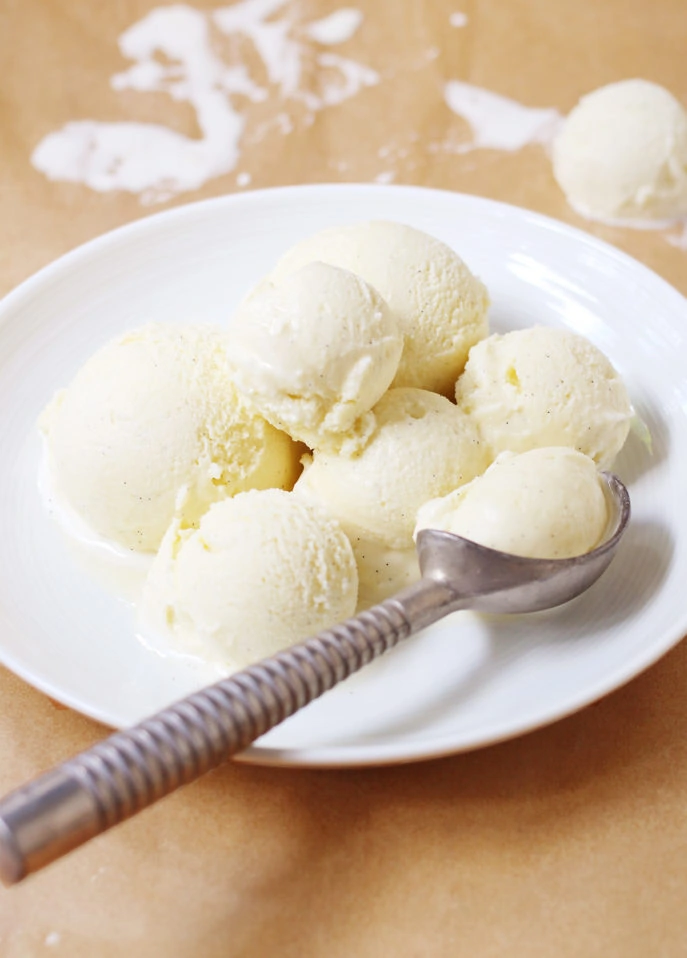
Classic Gelato Base (Vanilla Flavor)
Ingredients
- 3 cups milk, preferably whole (3.25% m.f.) or partly skimmed (2% m.f.)
- 5 large egg yolks (about 20 grams each)
- ¾ cup granulated sugar
- 1 vanilla bean, split lengthwise
Instructions
- In a medium saucepan, warm the milk over medium heat until it just starts to bubble around the edge (no need to bring it to a boil). Remove from the heat and reserve.
- In the bowl of a stand mixer, or in a large mixing bowl if you’re using a hand mixer, beat the egg yolks and sugar together until the mixture is thick and creamy (about 2 minutes at medium speed). With the mixer on low speed, slowly pour in one ladleful of the hot milk into the egg mixture. Slowly pour in the rest of the mixture and beat until the milk is well incorporated.
- Pour the milk and egg mixture back into the saucepan, add the vanilla bean, and place over medium-low heat and cook, stirring constantly, until the custard coats the back of a wooden spoon.
- Remove from the heat. Let cool to room temperature, then refrigerate for a few hours, or preferably overnight to infuse the custard with a deeper vanilla flavor.
- Fish the vanilla bean out of the custard, then pour the custard through a fine mesh strainer into the bowl of an ice cream maker (straining the mixture will ensure a silky smooth gelato). Freeze according to the manufacturer’s instructions. Stop the machine when the gelato is icy but still soft.
- STORAGE: Transfer the gelato to an airtight container and freeze until firm, about two hours.Classic gelato is at its creamiest and best if enjoyed within 2 weeks. Past that, some ice crystals will inevitably start forming (especially if the gelato is kept in the freezer section of a regular fridge, as opposed to a chest freezer) and the texture won't be quite as smooth. The gelato will still be perfectly edible for up to 2 months, but my advice is: enjoy it as quickly as possible after churning.Always take gelato out to room temperature 15 to 20 minutes before serving to soften it and make it easier to scoop.
- SERVING: Always take Gianduja gelato out to room temperature 20 minutes before serving to make it easier to scoop. This will also allow you to enjoy the treat at its ideal temperature and texture.
- VARIATIONS: Use this versatile base to make a variety of gelato flavors, such as Pistachio, Raspberry Rose, Blueberry, or Cherry Ripple!
- MAKE IT VEGAN: Get my recipe and instructions for making vegan gelato.
Did you make this?
Tell me how you liked it! Leave a comment or take a picture and tag it with @foodnouveau on Instagram.
This site is a participant in the Amazon Associates Program, an affiliate advertising program designed to provide a means for the site to earn fees by linking to Amazon and affiliated sites. If you click on an affiliate link, I may earn advertising or referral fees if you purchase through such links, at no extra cost to you. This helps me create new content for the blog–so thank you! Learn more about advertising on this site by reading my Disclosure Policy.
Author: Marie Asselin

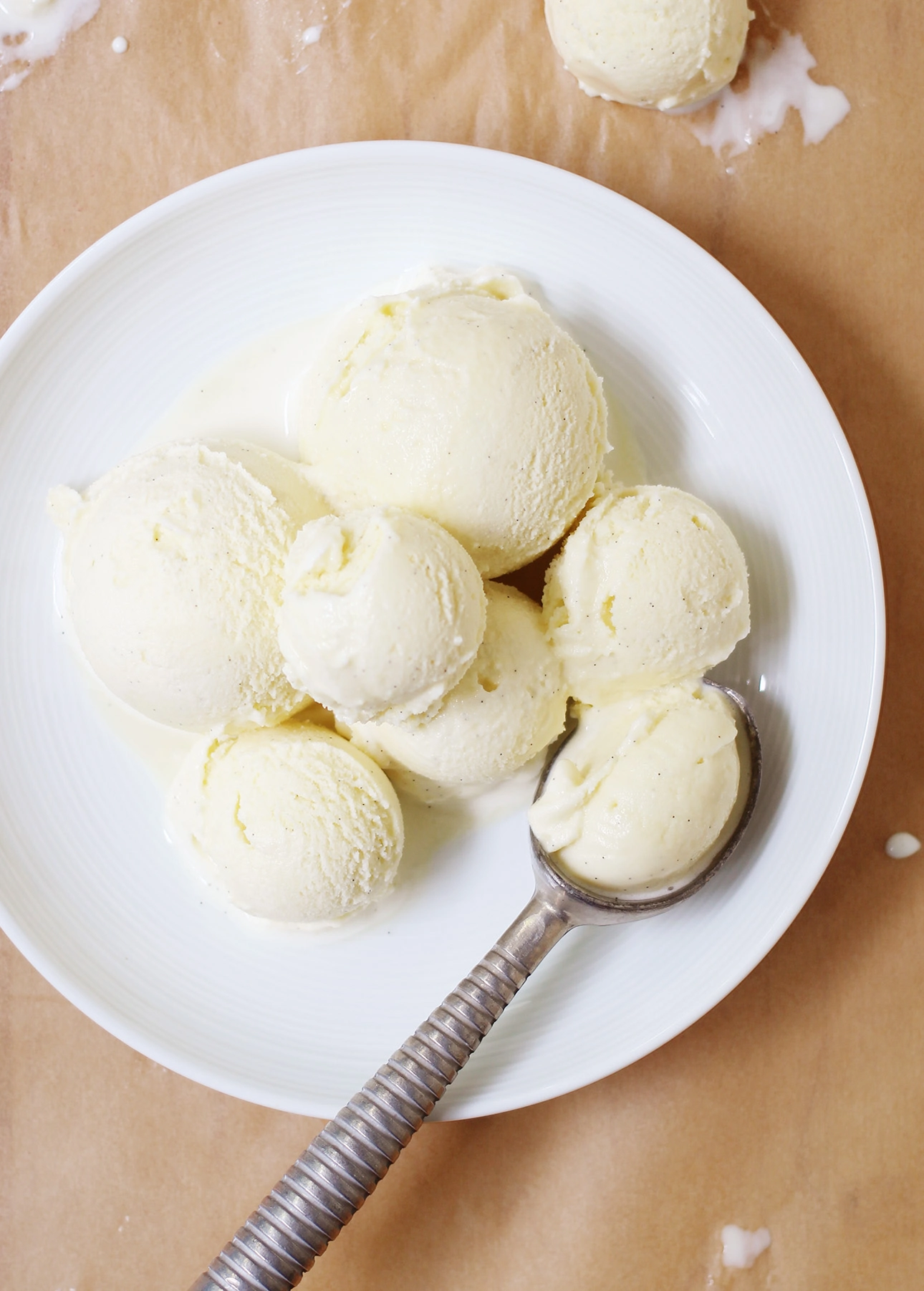
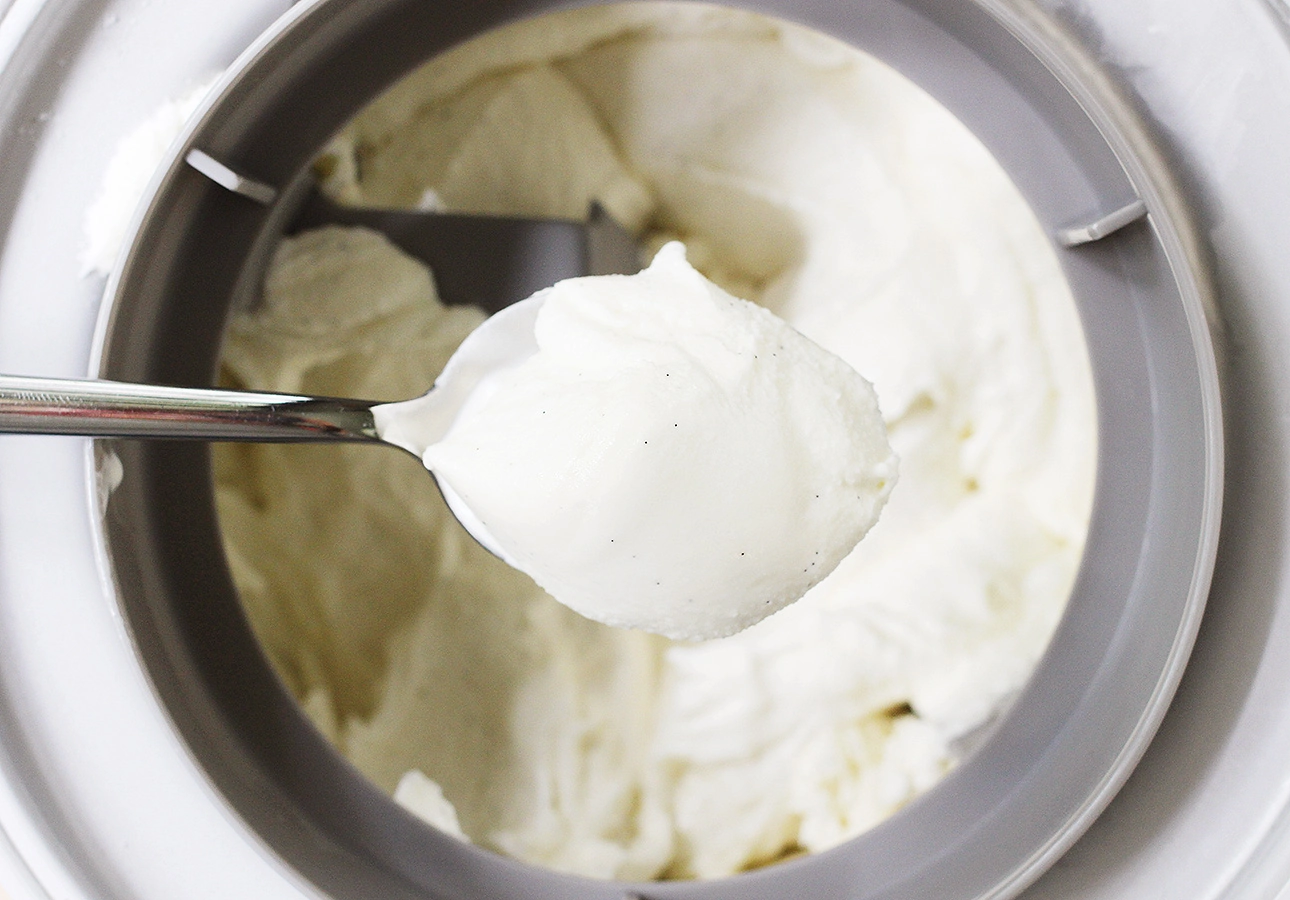
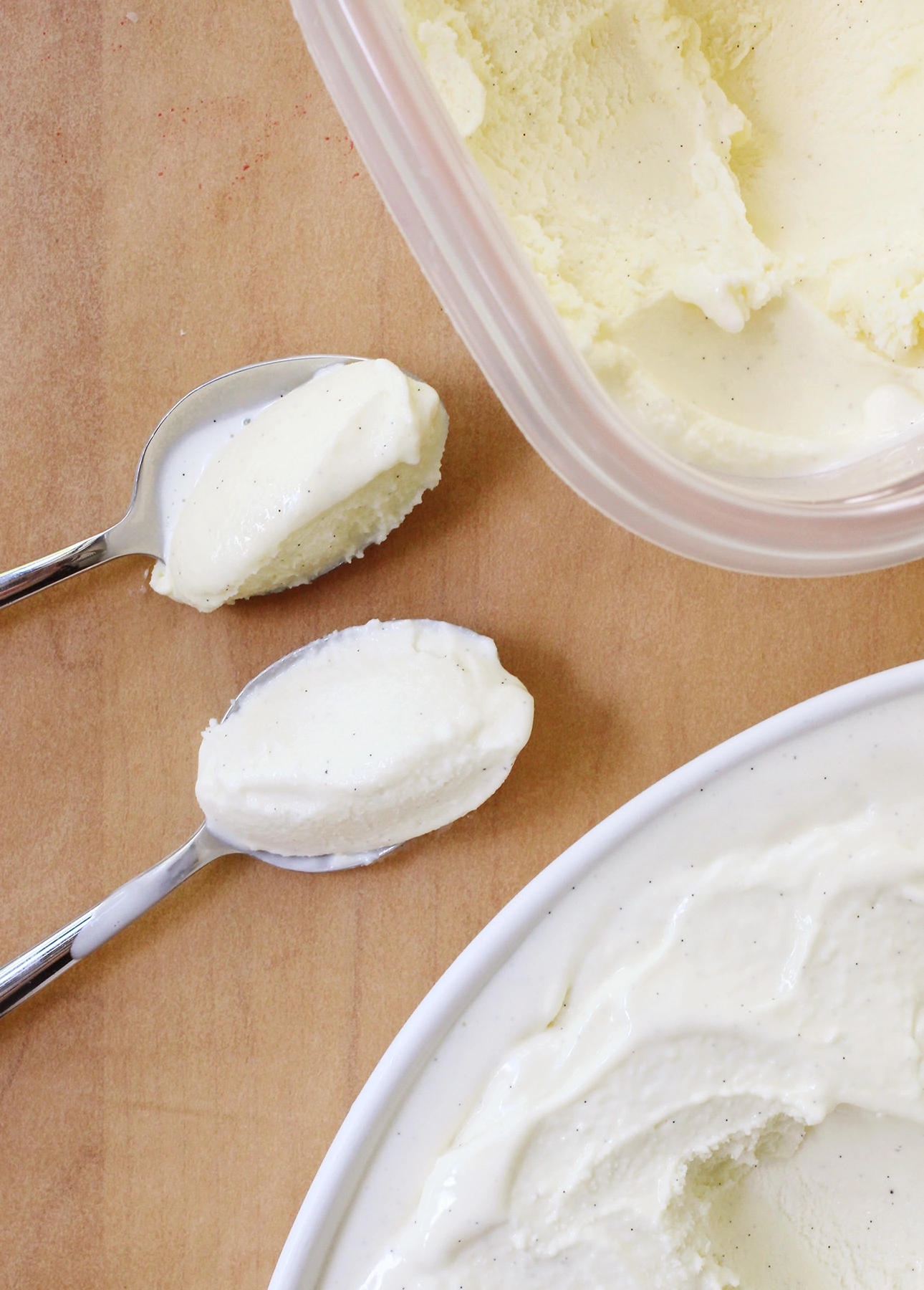
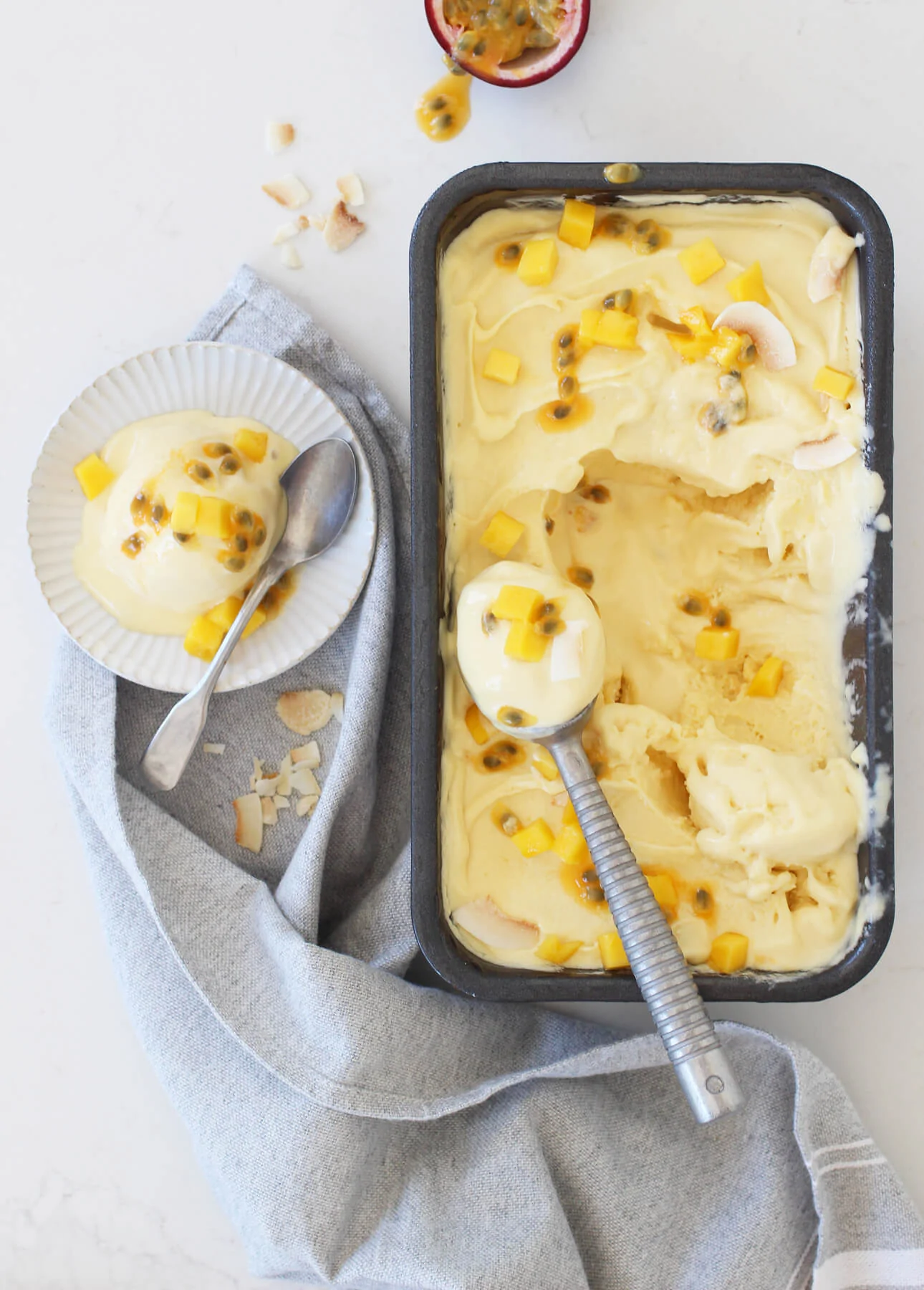
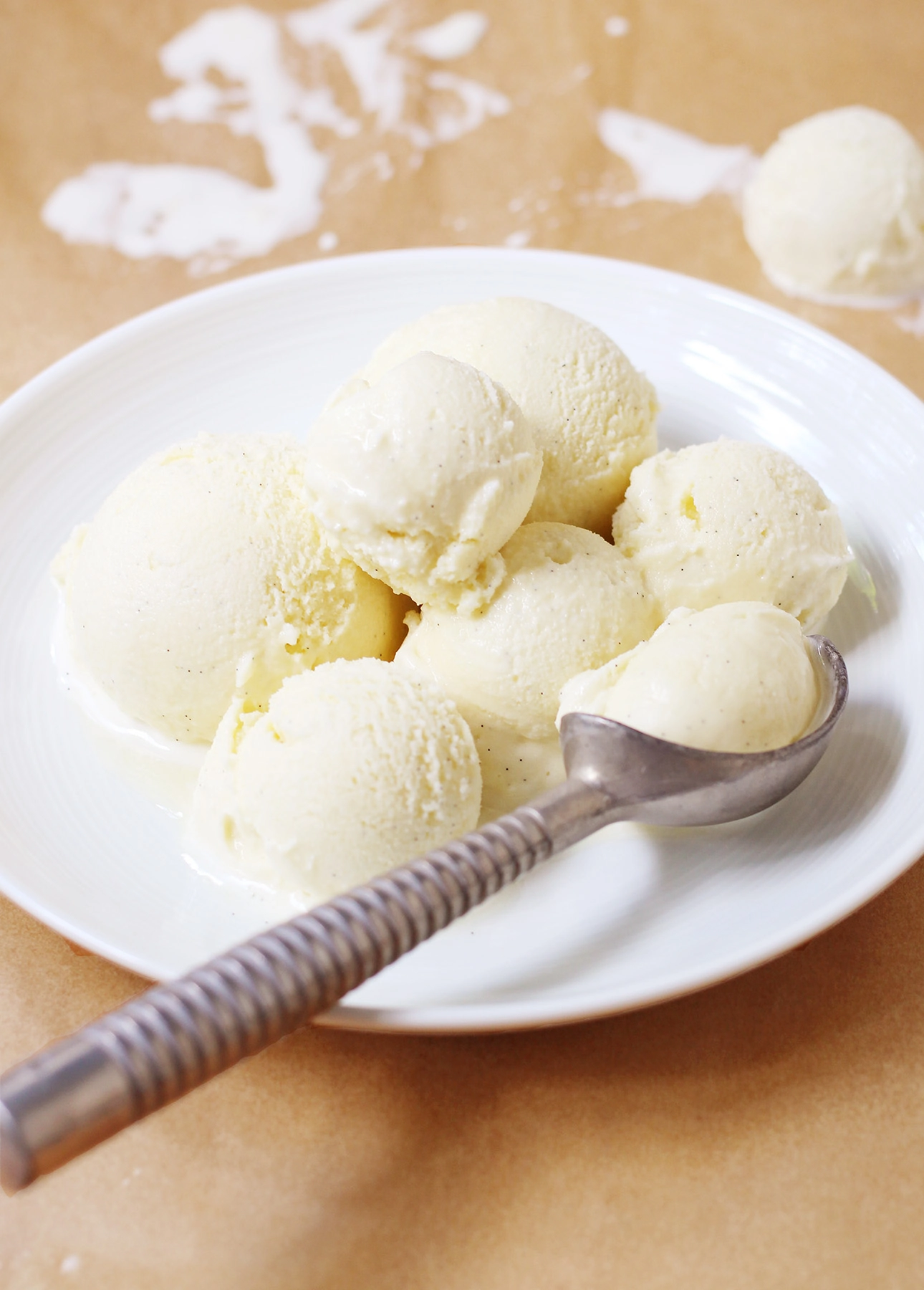
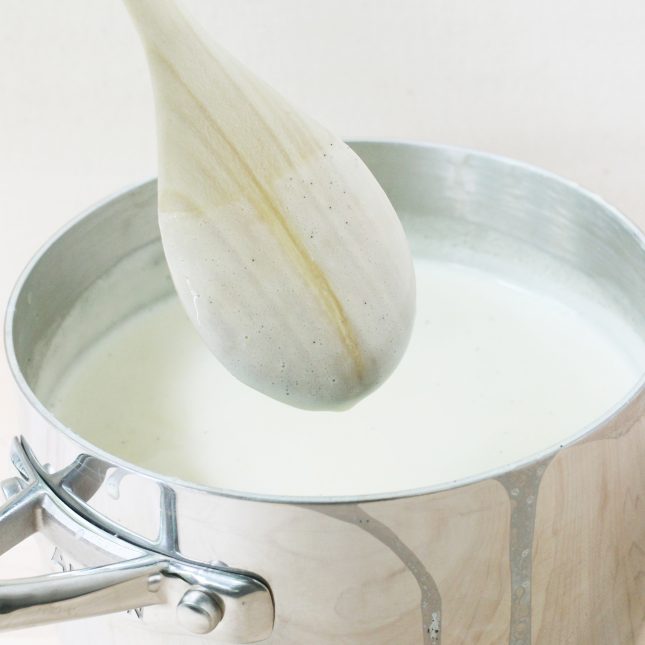

Wonderful gelato recipes. Very well explained. Great work!
Thanks so much Linda!
how do I turn the classic vanilla recipe into chocolate ?
Hey Mary! Please refer to my Dark Chocolate Gelato recipe to learn how to make the best chocolate gelato you’ve ever had 😉 I also have a milk chocolate gelato recipe, if that’s more to your liking. I’d love to hear which one you’ll try. Happy churning!
Buongiorno! The current summer heat makes me longing for some cold desserts. Luckily, I came across this article where you specifically pointed out that the texture of gelato is much denser compared to ice cream. Oh I’m so gonna find a nice gelato shop to fulfil my cravings at an instant.
Amazing recipe! The first time I made it I used vanilla extract because I didn’t have a bean and it turned out great. The second time I added cardamom and start anise to the custard base and used them to make peach and blueberry gelato. I liked the companion video with all of the great details about ice cream makers and the gelato technique. Be patient with cooking the custard- it’s absolutely worth doing this method over the Sicilian!
Adding spices to the custard definitely provides a really lovely flavor boost to fruit-based gelati! So happy to read my video class and tips were helpful to you. I’d love to hear which flavors you’re gonna churn next!
I’m going to try your chocolate gelato, but instead of coffee liquor do you know this amazing Italian chocolate liquor? Bicerin Originale Di Giandujotto. It’s incredible! Thanks for the YouTube video helped me get going. My favorite flavour experiment so far is… Amarela cherries with a touch of Almond essence.
Thanks for the feedback Ali! Happy to know my recipe is working well for you. I did not know the chocolate and hazelnut liquor you mentioned but now I’m obsessed with it! I hope I can find it where I am. If you have it on hand, you could definitely add a tablespoonful or two to either the dark chocolate gelato or my gianduja gelato! Let me know if you give it a try.
Hi.
Little baffle here. I saw you on YouTube. Saying one egg and if like to get recipes from this site and showing 5 yolks . Which one is correct??
Thank you
Hi Bridget! My classic gelato base uses 5 egg yolks, but the recipe that uses only one egg yolk (and cornstarch as an additional thickening agent) is my Sicilian-style gelato base. You’ll find the recipe for that right here: https://foodnouveau.com/sicilian-style-gelato/ Happy churning!
I tried the icecream with Raspberry … Very good!
I made a mistake and added 4 whole eggs instead of 4 yokes for my gelato. It is in the fridge cooling – should I throw it out?
I’ve never used whole eggs, but many people make ice cream using them. I hope you didn’t throw out your custard! If you did freeze it, how was the taste?
If you’re lactose intolerant how did you eat the gelato while you were in Italy? I’m pretty sure the shops in Italy weren’t using lactose free milk/cream.
hello ms Marie! if i want a cheese flavor, what’s the right process for the cheese do i have to put it in my base when it’s ready for churning? or do i have to melt the cheese first? Thank You:D
Hello Anjo, that is a very good question! I have never made or tasted cheese gelato. I would guess you’d need to melt the cheese in the hot custard. I think a creamy cheese such as goat’s cheese or ricotta would work well! Good luck and please report back if you do decide to incorporate cheese in your gelato recipe.